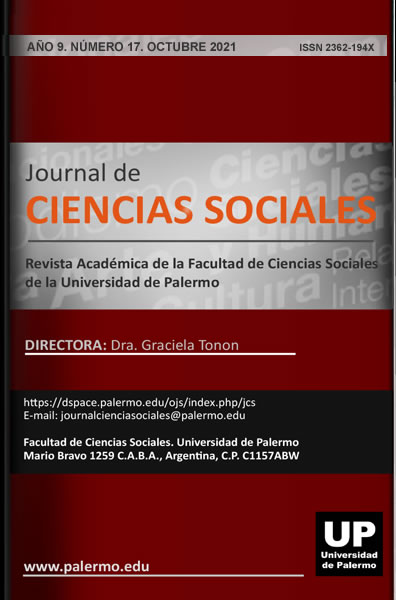Factores que inciden en la innovación organizacional de las Mipymes en México
Resumen
El presente trabajo muestra una investigación que argumenta acerca de la relevancia de los grupos de interés como fuentes internas y externas relevantes en el proceso de innovación organizacional, para lo cual se presentan los hallazgos obtenidos de la revisión de la literatura relativa sobre el tema, en donde se incluyen una serie de conceptos relacionados con esta forma de innovación, así como trabajos que muestran la relación de la gestión de grupos de interés con la innovación organizacional como base literaria para explicar la forma en cómo interactúan directa e indirectamente con las Mipymes mexicanas en este tipo de innovación. Con ese objetivo, se identifica que los stakeholders tales como administradores, empleados, clientes, proveedores, competidores, instituciones de crédito y gobierno, son partes interesadas relevantes en el proceso de innovación organizacional de las pequeñas y medianas empresas. La conclusión del trabajo propone que las múltiples interacciones entre grupos de interés de las Mipymes mexicanas son factores fundamentales que permiten comprender en mejor medida el entorno organizacional, tanto a nivel interno como externo, que explican la introducción de cambios orientados a mejorar el funcionamiento de estas empresas, y con ello, exponer la fundamental participación del administrador en esta dinámica organizacional.
Descargas
Citas
Abouzeedan, A. (2011). SME Performance and Its Relationship to Innovation (Disertation 1364). https://www.diva-portal.org/smash/get/diva2:447516/FULLTEXT01.pdf
Adler, N. Shani, A. B. y Styhre, A. (2004). Collaborative Research in Organizations: Foundations for Learning, Change, and Theoretical Development. Sage.
AL Ajlouni, M. I. (2013). Investigating the impact of knowledge management on organizational innovation: conceptual framework. International Journal of Academic Research, 5(1), 114–119. https://doi.org/10.7813/2075-4124.2013/5-1/a.18
Alänge, S., Jacobsson, S. y Jaryehammar, A. (2007). Some aspects of an analytical framework for studying the diffusion of organizational innovations. Technology Analysis & Strategic Management, 10(1), 3–22. https://doi.org/10.1080/09537329808524301
Amabile, T. (1988). A model of creativity and innovation in organizations. En L. L Cummins y B. M. Staw (Edts), Research in Organizational Behavior (pp. 123–167) Vol. 10. JAI Press.
Van de Ven, A. H. (2016). Central Problems in the Management of Innovation. Management, 32(5), 590–607.
Armbruster, H., Bikfalvi, A., Kinkel, S. y Lay, G. (2008). Organizational innovation: The challenge of measuring non-technical innovation in large-scale surveys. Technovation, 28(10), 644–657. https://doi.org/10.1016/j.technovation.2008.03.003
Arraut, L. (2008). La innovación de tipo organizacional en las empresas manufactureras de Cartagena de Indias. Semestre Económico, 11(22), 185–203.
Ascúa, R., Roitter, S., Vigier, H., Aggio, C., Baruj, G. y Pavlicevic, J. (2015). Lecturas seleccionadas de la XX Reunión Anual Red Pymes Mercosur.
Baregheh, A., Hemsworth, D. y Rowley, J. (2014). Towards an integrative view of innovation in food sector SMEs. International Journal of Entrepreneurship and Innovation, 15(3), 147–158. https://doi.org/10.5367/ijei.2014.0152
Barrera Rodríguez, A., Cuevas Reyes, V., Ramirez García, A. G. y Espejel García, A. (2017). Identificación de componentes de innovación organizacional para la consolidación de empresas asociativas rurales. Revista de Geografía Agrícola, (59), 127–144. https://doi.org/10.5154/r.rga.2017.59.006
Bigliardi, B., Colacino, P. e Ivo, A. (2011). Innovative Characteristics of Small and Medium Enterprises. Journal of Technology Management & Innovation, 6(2), 83–93. https://doi.org/10.4067/S0718-27242011000200006
Bikfalvi, A. (2007). Innovation, Entrepreneurship and outsourcing : essays on the use of knowledge in business environments. Doctor Europeus (PhD Programme) https://www.tdx.cat/bitstream/handle/10803/7958/tab.pdf?sequence=3&isAllowed=y
Carrillo, D. O. L., Martínez, D. G. R., Sánchez, D. Z. M. C., Real, D. O. B. R., Estrada, D. C. M. C., Ovilla, M. M. Á. G. y Estrada, D. L. de J. V. (2020). Gestión de Mipymes mexicanas en tiempos de COVID-19. Grupo Editorial Hess. https://ceune.unach.mx/images/Libros_congresos/Gestin_de_Mipymes_mexicanas_en_tiempos_de_COVID-19.pdf#page=291
Couchman, P. K. y Beckett, R. (2013). Construing Innovation as a Social Act: Any Clues for SMEs? British Academy of Management Conference, 21. http://www.bam.ac.uk/
Damanpour, F. (2020). Organizational Innovation: Theory, Research, and Direction. Edward Elgar Publishing
Díaz Ramos, M. A., Melgarejo Galindo, L., Melgarejo Galindo, D., Olivera Gómez, D. A., Vázquez Luna, M., Canul Dzul, J. M., Salgado Morales, E. y Cecilia Ramón Vila, M. D. J. (2019). Innovación tecnológica en las pymes 1. Red Iberoamericana de Academias de Investigación. http://redibai-myd.org/portal/wp-content/uploads/2020/01/8617-49-4.pdf
Dini, M. y Stumpo, G. (coords). (2019). Mipymes en América Latina: un frágil desempeño y nuevos desafíos para las políticas de fomento. Síntesis. Comisión Económica para América Latina y el Caribe (CEPAL).
Edison, H., bin Ali, N. y Torkar, R. T. (2010). Towards innovation measurement in software industry. Journal of Systems and Software, 86(5), 1390-1407. https://doi.org/10.1016/j.jss.2013.01.013
Ejdys, J. (2015). Market orientation vs. inovativeness of SMEs of Podlaskie province. Verslas: Teorija Ir Praktika, 16(4), 353–361. https://doi.org/10.3846/btp.2015.563
Esparza, S. y Martínez, J. (2019). The shared benefit approach to competitiveness. Mercados y Negocios, 1(39), 66–85. https://doi.org/10.1016/j.it.2011.10.005
Freeman, R. E. (2004). The Stakeholder Approach Revisited. Zeitschrift Für Wirtschafts-Und Unternehmensethik, 5(3), 228–241. https://doi.org/10.3763/jsfi.2010.0008
Freeman, R. E. (2017). Five Challenges to Stakeholder Theory: A Report on Research in Progress (pp. 1–20). Stakeholder Management (Business and Society 360, Vol. 1). https://doi.org/10.1108/S2514-175920170000001
Gul, S. y Nouman, M. (2009). Innovation in Pakistan? SMES: Making the case for coupling model and looking beyond. Business & Economic Review, 1(1), 20-25.
Hámori, B. y Szabó, K. (2011). Organizational innovations and their behavioral background. Scientific Management and Management Science Today. International Scientific Conference, University of Szeged, Faculty of Economics and Business, Szeged, Hungría. 4 y 5 de noviembre.
Han, J. K., Kim, N. y Srivastava, R. K. (1998). Market Orientation and Organizational Performance: Is Innovation a Missing Link? Journal of Marketing, 62(4), 30. https://doi.org/10.2307/1252285
He, Y., Gan, S. y Xiao, L. (2021). Can foreign suppliers act as “innovation springboards” for firms? Evidence from China. Research in International Business and Finance, 56. https://doi.org/10.1016/j.ribaf.2020.101353
Ibrahim, B. (2017). Access to Financial Institutions Financing as an Instrument of Growing Small Businesses in Nigeria: An Empirical Study. International Journal of Scientific and Research Publications, 7(10). www.ijsrp.org
Korhonen, H. M. E. y Kaarela, I. (2011). Corporate Customers’ Resistance yo Industrial Service Innovations. International Journal of Innovation Management, 15(03), 479–503. https://doi.org/10.1142/s136391961100343x
Kraśnicka, T., Głód, W. y Wronka-Pośpiech, M. (2017). Management Innovation and Its Measurement. Journal of Entrepreneurship, Management and Innovation, 12(2), 95–121. https://doi.org/10.7341/20161225
Kruse, P. (2013). Customer Involvement in Organizational Innovation: Toward an Integration Concept. Proceedings of the Nineteenth Americas Conference on Information Systems, 2012, 1–10. https://aisel.aisnet.org/cgi/viewcontent.cgi?referer=https://www.google.com/&httpsredir=1&article=1418&context=amcis2013
Lam, A. (2009). Organizational Innovation. In The Oxford Handbook of Innovation. Oxford University Press. https://doi.org/10.1093/oxfordhb/9780199286805.003.0005
Larios-Gomez, E. (2016). La Gestión de la Competitividad en la MIPYME Mexicana: Diagnóstico Empírico desde la Gestión del Conocimiento. Revista de Administração Da Unimep, 14(2), 177–209. https://doi.org/10.15600/1679-5350/rau.v14n2p177-209
Leal-rodriguez, A. L. y Albort-Morant, G. (2016). Linking Market Orientation, Innovation and Performance : an Empirical Study on Small Industrial Enterprises in Spain. Journal of Small Business Strategy, 26(1), 37–50. https://doi.org/10.13140/RG.2.1.2862.9523
Leovaridis, C., & Popescu, G. (2015). Organizational Innovation – A Means to Enhance Quality of Life for Employees in Knowledge Economy. Dinámica de Gestión En La Economía Del Conocimiento, 3(1), 25–43.
Lima, L., Morais, R. y Mendes, F. (2017). The Influence of National Culture and Access to Innovation on Innovation Openness. XX SemeAd Seminários em Administração, 16. http://login.semead.com.br/20semead/arquivos/783.pdf
Lindblad, H. y Karrbom Gustavsson, T. (2021). Public clients ability to drive industry change: the case of implementing BIM. Construction Management and Economics, 39(1), 21–35. https://doi.org/10.1080/01446193.2020.1807032
Margir, A., Eiduzehi, N. T., Surizehi, Z. y Kamalipur, N. K. (2014). Studying the Relationship between Organizational Innovation and System thought in Service Organization. International Journal of Academic Research in Business and Social Sciences, 4(7), 25. https://doi.org/10.6007/ijarbss/v4-i7/984
Mitchell, R. K., Agle, B. R. y Wood, D. J. (1997). Toward a Theory of Stakeholder Identification and Salience: Defining the Principle of Who and What Really Counts. Academy of Management Review, 22(4), 853–886. https://doi.org/10.5465/AMR.1997.9711022105
Morrar, R., Gallouj, F. y Hammadou, H. (2013). Public-private innovation networks and innovation activities in French service firms. Journal of Innovation Economics, 10(2), 191. https://doi.org/10.3917/jie.010.0191
Mothe, C. y Nguyen-thi, T. U. (2011). Do firms rely on sources of information fo,r organizational innovation? International Journal of Technology Management, 1/2(63),125-144
Olson, P., Mazzarol, T., Volery, T., Clark, D. y Gough, N. (2011). A Multi-Country Strategic Alignment Study: Are SME Leaders’ Decisions Aligned with their Country’s Innovation Environment? 56th Annual ICSB World Conference, 60, 1–23. https://cemi.com.au/sites/all/publications/Olson, Mazzarol, Volery, Clark and Gough ICSB 2011.pdf
Petiz Lousã, E. y Mendes Mónico, L. (2018). How can leadership and organizational culture predict innovation in small, medium and large enterprises? The Journal of Organizational Management Studies, 2018. DOI: 10.5171/2018. 703891
Racela, O. C. (2014). Customer Orientation, Innovation Competencies, and Firm Performance: A Proposed Conceptual Model. Procedia - Social and Behavioral Sciences, 148, 16–23. https://doi.org/10.1016/j.sbspro.2014.07.010
Ricciardi, F. (2014). Innovation Processes in Business Networks: Managing Inter-Organizational Relationships for Innovational Excellence. Springer.
Rodríguez Valencia, N. E. y Olivares Contreras, R. A. (2019). Innovación de productos, de procesos y estratégica: un escenario de los empresarios futuros y actuales en México. RICEA Revista Iberoamericana de Contaduría, Economía y Administración, 8(16), 80–105. https://doi.org/10.23913/ricea.v8i16.135
Sahrom, N. S., Tan, C. L. y Yahya, S. (2016). Regulation, incentives and government policy: How does it stimulate R&D engineers’ innovative behaviours in malaysian biotechnology SMEs? Asian Academy of Management Journal, 21, 49–73. https://doi.org/10.21315/aamj2016.21.supp.1.3
Siguaw, J. A., Simpson, P. M. y Enz, C. A. (2006). Conceptualizing innovation orientation: A framework for study and integration of innovation research. Journal of Product Innovation Management, 23(6), 556–574. https://doi.org/10.1111/j.1540-5885.2006.00224.x
Silva, A. R. D., Ferreira, F. A. F., Carayannis, E. G. y Ferreira, J. J. M. (2021). Measuring SMEs ’ Propensity for Open Innovation Using Cognitive Mapping and MCDA. IEEE Transactions on Engineering Management,, 68(2), 396–407. https://doi.org/10.1109/TEM.2019.2895276
Steiber, A. y Alänge, S. (2015). Organizational innovation: a comprehensive model for catalyzing organizational development and change in a rapidly changing world. Triple Helix, 2(1), 0–25. https://doi.org/10.1186/s40604-015-0021-6
Tang, J., Pee, L. G. y Iijima, J. (2013). Investigating the effects of business process orientation on organizational innovation performance. Information and Management, 50(8), 650–660. https://doi.org/10.1016/j.im.2013.07.002
Totterdill, P. (2015). Closing the Gap: The Fifth Element and Workplace Innovation. European Journal of Workplace Innovation, 1(1), 55–74. http://journal.uia.no/index.php/EJWI/article/viewFile/166/113
Townsend, W. (2010). Innovation and the value of failure. International Journal of Management and Marketing Research, 3(1), 75–84.
van de Vrande, V., de Jong, J. P. J., Vanhaverbeke, W. y de Rochemont, M. (2009). Open innovation in SMEs: Trends, motives and management challenges. Technovation, 29(6–7), 423–437. https://doi.org/10.1016/j.technovation.2008.10.001
Vega, L. A. (2016). Las nuevas formas de organización y la empresa socialmente responsable, piezas fundamentales para el desarrollo de la innovación. TEACs, 8(18), 31–45.
Voica, O. M., Stancu, S. y Naghi, L. E. (2016). Stimulating the innovative proposals from employees. Ecoforum, 5(1), 235–240.
Watson, R., Wilson, H. N., Smart, P. y Macdonald, E. K. (2018). Harnessing Difference: A Capability-Based Framework for Stakeholder Engagement in Environmental Innovation. Journal of Product Innovation Management, 35(2), 254–279. https://doi.org/10.1111/jpim.12394
Zhao, Q., Tsai, P. H. y Wang, J. L. (2019). Improving financial service innovation strategies for enhancing China’s banking industry competitive advantage during the fintech revolution: A hybrid MCDM model. Sustainability (Switzerland), 11(5), 1–29. https://doi.org/10.3390/su11051419
Zhuang, Y. (2005). Does Electronic Business Create Value for Firms? an Organizational Innovation Perspective. Journal of Electronic Commerce Research, 6, 146-151,153-156. http://ojs.jecr.org/jecr/sites/default/files/06_2_p05.pdf
Otros docuementos consultados
Instituto Nacional de Estadísitca y Geografía - INEGI (2017). Encuesta sobre Investigación y Desarrollo de Tecnología 2017 ESIDET. Síntesis metodológica (Documentos Meteodológico). https://www.inegi.org.mx/contenido/productos/prod_serv/contenidos/espanol/bvinegi/productos/nueva_estruc/702825109073.pdf
Instituto Nacional de Estadísitca y Geografía - INEGI (2019). INEGI Presenta resultados de la encuesta nacional sobre productividad y competitividad de las micro, pequeñas y medianas empresas (ENAPROCE) 2018. Comunicado de prensa (448/19). https://www.inegi.org.mx/contenidos/saladeprensa/boletines/2019/especiales/ENAPROCE2018.pdf
Organización para la Cooperación y el Desarrollo Económicos - OCDE. (2019). OECD SME and Entrepreneurship Outlook 2019. In OECD SME and Entrepreneurship Outlook 2019. https://doi.org/10.1787/34907e9c-en
Organización para la Cooperación y el Desarrollo Económicos -OCDE y la Comunidad Europea UE. (2018). Oslo Manual. https://doi.org/10.1787/9789264304604-en
Organización Internacional del Trabajo - OIT. (2020). Entorno MIPYME: Medidas de apoyo a la micro, pequeña y mediana empresa en América Latina y el Caribe frente a la crisis de la COVID-19. https://www.ilo.org/wcmsp5/groups/public/---ed_dialogue/---act_emp/documents/publication/wcms_762907.pdf
Los autores conservan los derechos sobre su obra garantizando a esta revista el derecho de primera publicación, comprometiéndose a citar el Journal de Ciencias Sociales como referencia de la publicación original.
Los trabajos publicados en el Journal se publican bajo los términos que se indican en la Licencia de Creative Commons con la Atribución 4.0 Internacional (CC BY 4.0).




























